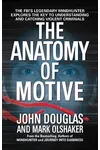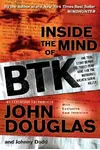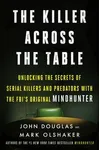Picture an FBI agent turned storyteller who peered into the minds of serial killers and brought their chilling stories to the page—meet John E. Douglas! As a pioneering criminal profiler, he revolutionized how we understand violent crime, then channeled his expertise into gripping true crime books like Mindhunter, captivating readers and inspiring iconic TV shows.
With a career spanning over 25 years at the FBI and a bibliography that’s as thrilling as a crime scene, Douglas’s unique blend of real-world experience and storytelling prowess has made him a legend in criminal psychology and literature. Ready to dive into his fascinating journey?
The Making of John E. Douglas
Born on June 18, 1945, in Brooklyn, New York, John Edward Douglas initially dreamed of becoming a veterinarian. But after struggling academically at Montana State University, he pivoted, enlisting in the U.S. Air Force in 1966. While stationed at Cannon Air Force Base, he earned a bachelor’s degree from Eastern New Mexico University. A chance meeting with FBI agent Frank Haines in Clovis, New Mexico, sparked his law enforcement career. Douglas joined the FBI in 1970, starting as a sniper and hostage negotiator in Detroit before transferring to the Behavioral Science Unit (BSU) in 1977, where his profiling legacy began.
John E. Douglas’s Unforgettable Stories
Douglas’s books are a masterclass in blending raw investigative detail with psychological insight, making true crime both accessible and electrifying. His seminal work, Mindhunter: Inside the FBI’s Elite Serial Crime Unit (1995), co-authored with Mark Olshaker, chronicles his groundbreaking profiling work, from interviewing killers like Ted Bundy to solving cases like the Atlanta child murders. It’s a raw, immersive dive into the criminal mind, adapted into Netflix’s hit series Mindhunter.
Other key works include The Anatomy of Motive (1999), which explores why criminals kill, and The Cases That Haunt Us (2000), dissecting infamous cases like JonBenét Ramsey’s murder. The Killer Across the Table (2019) showcases Douglas’s interview techniques with notorious offenders, offering chilling yet fascinating insights. His style—direct, analytical, yet gripping—reflects his FBI roots, turning complex psychology into page-turning narratives that educate as much as they entertain.
Douglas’s influence extends beyond books. His profiling methods shaped the FBI’s Behavioral Analysis Unit, and his work inspired characters like Jack Crawford in The Silence of the Lambs and Jason Gideon in Criminal Minds. Whether he’s unpacking a killer’s psyche or consulting on high-profile cases, Douglas’s storytelling is as methodical as his investigations.
Why John E. Douglas Matters
John E. Douglas didn’t just catch criminals—he changed how we catch them. By pioneering criminal profiling, he gave law enforcement a powerful tool to predict and apprehend violent offenders, from the Green River Killer to the Unabomber. His books have educated millions, demystifying the psychology of crime while fueling the true crime genre’s popularity. From lecture halls to Netflix screens, Douglas’s legacy as a profiler and author continues to shape how we understand the darkest corners of human behavior.
Even in retirement, Douglas remains active, teaching through MasterClass, consulting on cold cases, and advocating for justice, as seen in his work on the West Memphis Three case. His ability to humanize both victims and investigators ensures his work resonates with readers and professionals alike.
- Born: June 18, 1945, Brooklyn, New York
- Key Works: Mindhunter, The Anatomy of Motive, The Cases That Haunt Us, The Killer Across the Table
- Awards: Two Thomas Jefferson Awards for academic excellence
- Notable: Inspired characters in The Silence of the Lambs and Criminal Minds
Snag Mindhunter and dive into John E. Douglas’s thrilling world of criminal psychology—your inner detective will thank you!

















